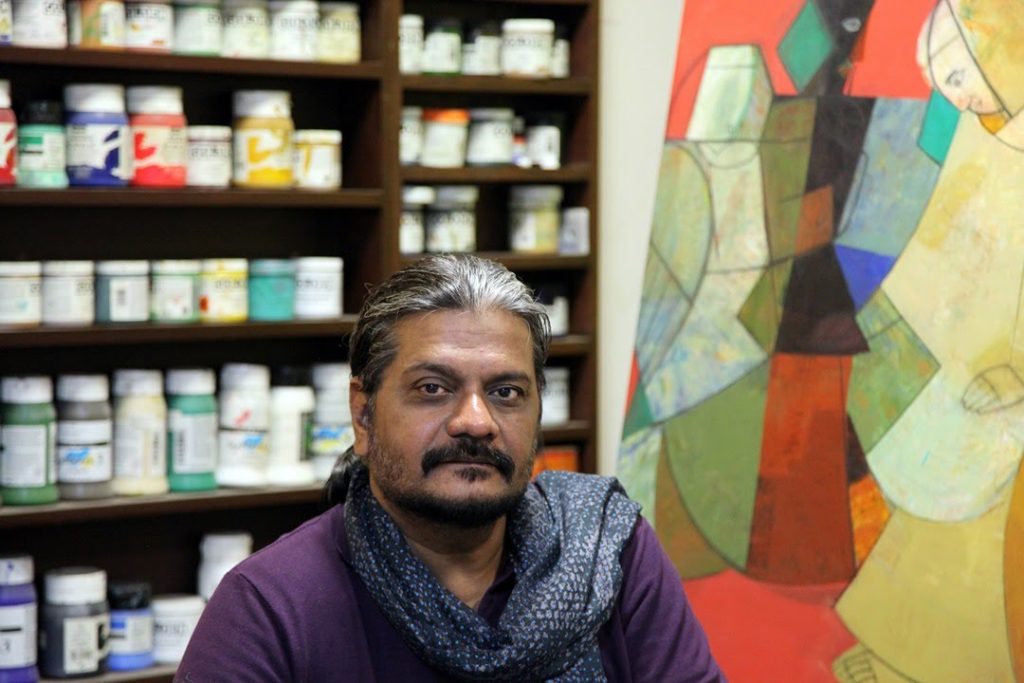“For me, painting and meditation are the same thing. I depict the bliss I achieve while meditating on canvas so that viewers can experience these positive vibrations as well.”
– Neeraj Goswami
One is always intrigued by the oppositional relationship between the transcendent and the everyday. One prominent understanding of mysticism alerts us that meditation or seeking the transcendent involves subtracting the chaos of the every day and descending into the womb of silence and emptiness. Not the cackle of a crowded bus but the stillness of a temple or your garden is more amenable to connect to the subliminal. How does artistic practice translate into a method towards accessing and expressing the transcendent? In attempting this, how does a personal stylistic idiom take shape which transgresses prevailing forms of expression? In today’s article, we look at the oeuvre of Neeraj Goswami, one of India’s foremost painters, who has mobilised art for spiritual ends.
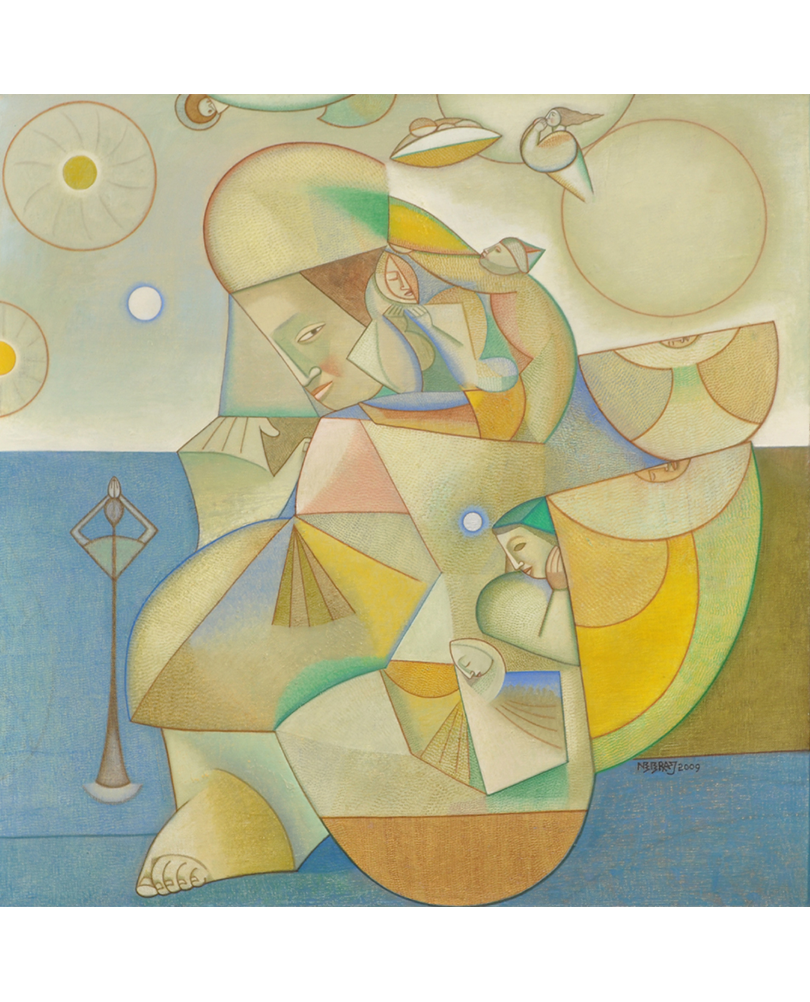
Born in Patna in 1964, Goswami completed his Bachelor’s and Master’s degree from the Delhi School of Art before joining as guest faculty. He taught for 10 years and then left the job to pursue art full-time. Goswami’s interest in art developed very early in his life. His first encounter with an artist was in primary school when he saw his principal paint in her studio. She recognized his inclination towards painting and encouraged him. He recalls that when he was merely 4 or 5 years old, she gave him a chance to do a big mural on a wall, an experience which inspires him till today.
The decisive turn in Goswami’s life came with the accidental departure of his father when he was in class 10, putting him in deep distress and anxiety. On the insistence of a relative, he joined Shri Poornanand Ajapa Yog Sansthan and began attending their meditation classes. Eventually, he also got deeply interested in the mystic traditions of India. This marked the beginning of his spiritual journey and the development of his unique artistic practice.
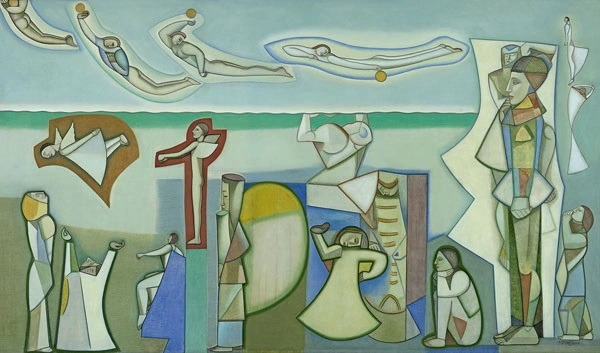
He is renowned for his geometric rendering of human forms in myriad colours that depict beautiful unearthly landscapes with a sublime ambience and an interplay of joy and sorrow, meditation, and loneliness. For Goswami, the canvas is a pathway to his inner being which allows him to embark on a journey or a kind of meditation that brings about certain thoughts that ultimately find expression as the work of art. He adds, that his painting is never a finished product: “In my work, I don’t give it a subject. It is a process; it is a journey. I start from somewhere; I reach somewhere and I give it a subject later on to help others associate with it.”
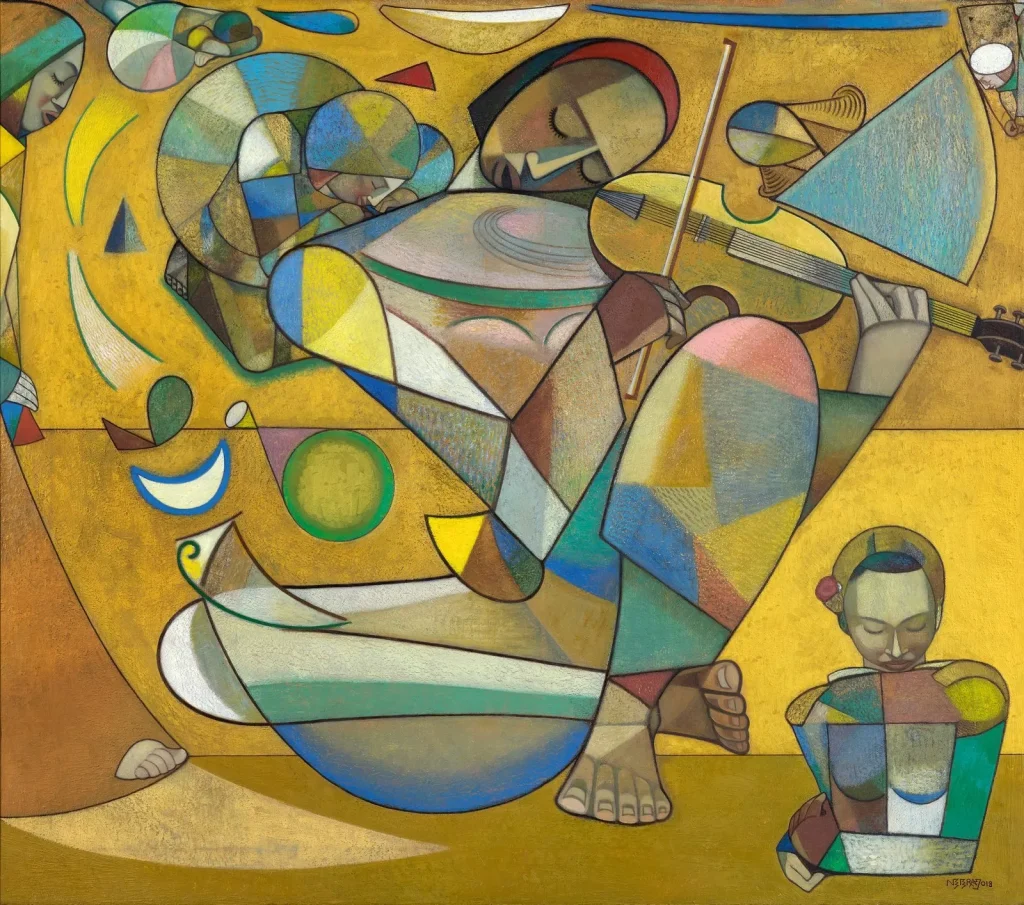
For instance, The Violin Player is an exquisite celebration of a harmony brought about by that other medium close to the transcendent – music. The strength of Goswami’s skill is evident in the splendid execution of the human form carved into or rather formed through a geometric consonance of irregular shapes. This stylistic feature emerged out of his quest to find a new form to express his inner angst after the passing away of his father. His earlier paintings paraded a queer distortion and mystery with a sombre colour palette and often slashed the human body into mechanical parts.
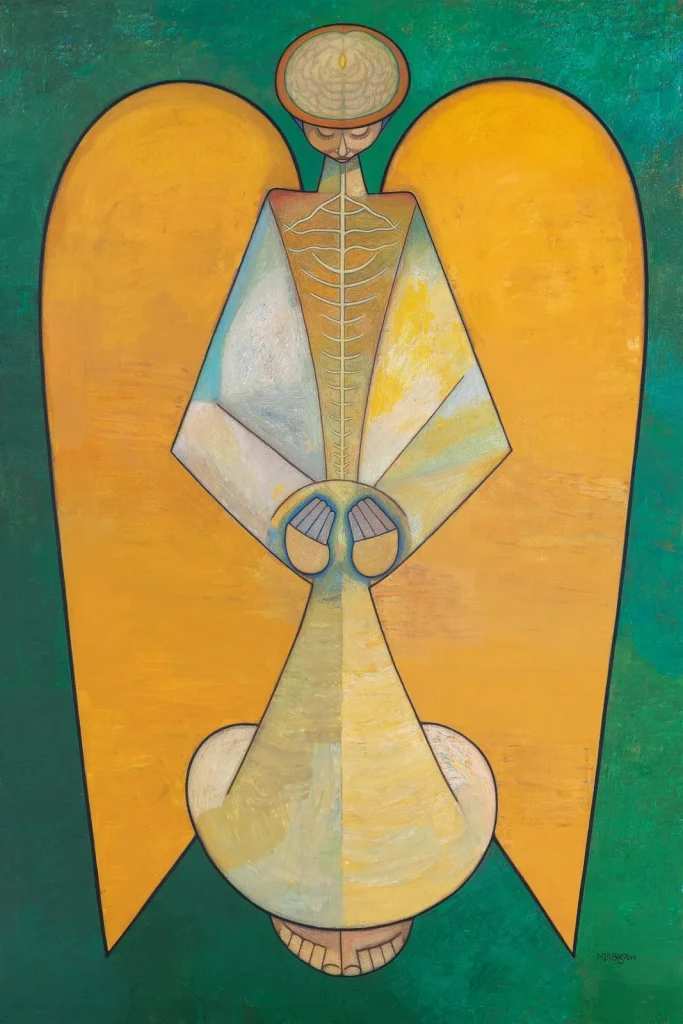
However, marriage brought hope and colour to his life and slowly the mechanistic features dissipated to give way to a rhythmic composition and ebullient colour patterns. From then on painting also became a search for different rhythms on canvas for Neeraj. Bodh Consciousness exhibits Goswami at his artistic best. As the critic Uma Nair notes: “[It] is a painting that embraces the truth that colour is a form of energy that can stimulate our senses and bring out a range of emotions.” The minimalistic yet nuanced figuration immerses the viewers and transports them to the abode of the angelic while instilling a sense of contentment and tranquillity.
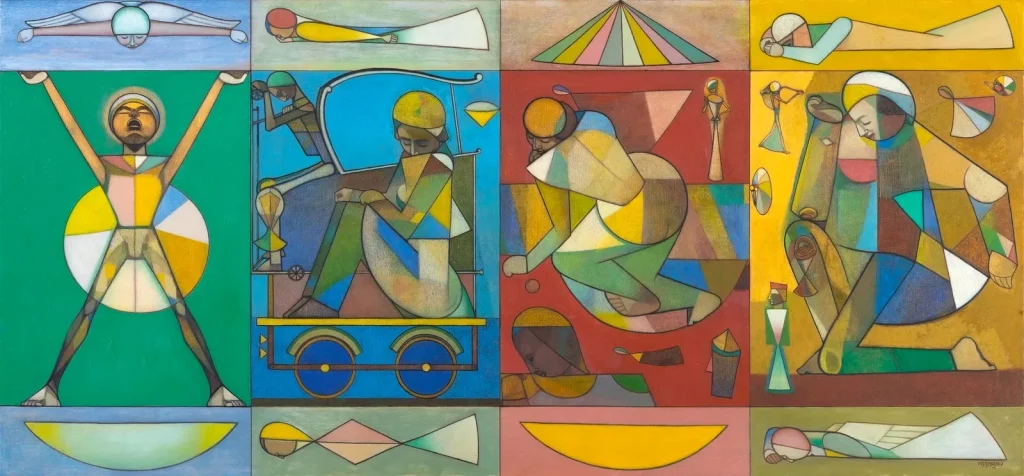
Speaking about the recurring motif of angels in his paintings, Goswami admits the necessity of a divine form to represent higher emotions and planes of existence that his works strive towards. Ever since a child, he has been asking himself “Who am I? Am I beyond body, mind, senses, and intellect?” through his art and introspection he reached the conclusion that his existence exceeds the physical–material world and that it is only through painting that he can encounter the real “I.”
Goswami’s work has drawn considerable attention and acclamation over his long career. He received the Bharat Bhavan Award at the Second Biennial of Contemporary Indian Art in the year 1988. In the same year, he was also awarded the Lalit Kala Research Grant Fellowship. The artist held his first solo in early 1980 while still in school, and has since held a number of shows across India and in New York, Paris, Hong Kong, Dubai, Singapore, UK, among others. In 2013, Arun Ghose produced a book on the artist’s life and art titled Art of Neeraj Goswami: Liquid Distillations of Animated Consciousness. His work is a constant reminder that amidst the chaos and devastation of modern life, art still holds the capacity to bring a regenerative placidity to our minds.
References
- Architectural Digest: Neeraj Goswami
- Facebook India Art Fair: Neeraj Goswami At India Art Fair
- New Indian Express: An Artist and a Spiritualist
- Art Wings Site: Art is a universal Language Neeraj Goswami
Read Also:
Google Doodle Celebrates the 93rd Birthday of Polish Sculptor Magdalena Abakanowicz

Contributor

